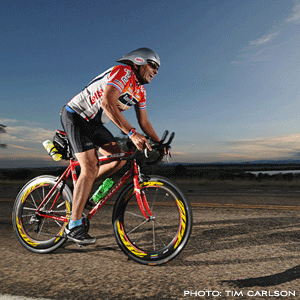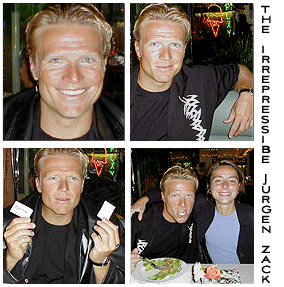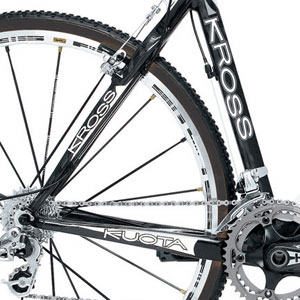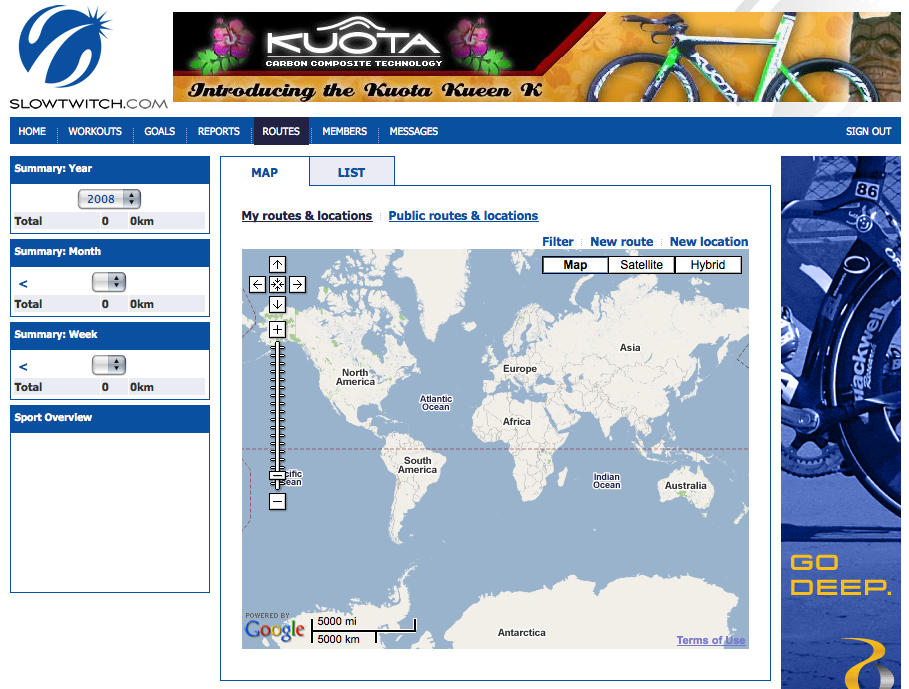The Winter months

If you were an investment banker and were taking a client public in, say, four months, you'd have a time line drawn up. You'd know you can't get to day-zero without first completing pre-publicity, due diligence, and prospectus mailings, which require writing, editing, graphic design, and on and on. Four months before day-zero you're long past planning, you're well into execution.
That's your approach in business. But is it your approach to training? I probably don't have to tell you that in the months of January and February you should be doing a specific type of training which is very different than what you'll be doing in June. All that sits somewhere in your subconscious, and when I relay the typical wisdom used in constructing a season of training and racing, it'll all be stuff you instinctively know.
It's intuitive, and the approach is exactly the same as when you take your client public. But if you're like a lot of your fellow athletes, you just never moved the notions of proper training strategy from the corner of your peripheral vision to front-and-center. But since it is winter and it is preseason—unless you live in the southern hemisphere—let's take the bird's eye view of your upcoming season. Consider an expansive landscape of your training and racing year now, while there's plenty of time to get it right.
Many of the pros and top age-group racers I know and have known historically race two mini-seasons during the course of the year. This is partially because of the seasonality of resort locations, where triathlons are frequently held. Just before and just after summer are the "shoulder seasons" for most resort towns: the kind of towns that have beaches in which to swim and hotels which must be filled. The shoulder seasons are when these towns want triathlons, and this is why many of your favorite races take place when they do. So there are races in May and June, and other races in September and October. This also works well for many of the pros, because it is hard to hold a peak all year long.
So they'll plan to peak for races in May and June, through which they might qualify for a World Championship or the Hawaiian Ironman in September or October. In North America such races are Wildflower, St. Anthony's, St. Croix, the Oceanside 70.3, or perhaps a national championship that qualifies its participants for Worlds. Overseas races like Ironman Australia also fit into this training/racing pattern.
What ought you to be doing now, if your racing schedule calls for a peak in June or thereabouts?

The Germans started wintering in San Diego in the late '80s. Back then nobody had ever heard of Jürgen Zäck, and the big cheese was Wolfgang Dittrich. They both showed up in North County to escape the German winter. There were some other occasional Euro-drifters showing up back then as well, including a short-course MOP'er from Belgium named Luc Van Lierde.
We used to laugh at the Germans. They rode 12 miles-an-hour. You couldn't go on a ride with them, you'd be climbing the walls within 5 miles. We used to talk a lot of smack back then, and the Germans were the butt of many jokes. Wolfie's comment to all of this was always the same, and became a bit of a mantra for us: "We shall see." The undeniable truth to the decade of the '90s, at least as regards long-distance racing, is that we saw. The Germans clearly "got it." The Americans clearly didn't.
The Germans don't ride as slow as they used to. Yanks and Germans had a sort of detente on that issue somewhere along the way, an unspoken agreement to split the difference, riding at around 15 miles-an-hour. But that's it. No faster. Not for the first month. And although it might not have been hard riding, that doesn't mean it was an easy regimen. It might not have been fast, but it was long. There is Jürgen's loop, for example. It starts and ends on the coast, and hits such cultural landmarks as Dudley's Bakery (just about halfway, where you have precisely five minutes to do whatever it is you need to do or you get left behind). The ride climbs to one-thousand meters above sea level, and it's 120 miles all-told. Jürgen would ride this as many as three times per week.
The American pros who came to test their pre-season mettle in San Diego were often fit and full-stride in February. But the Germans, although they were in San Diego training on the same roads at the same time, were just warming up. We must grudgingly concede that the Germans knew what the Yanks didn't—that January and February are not August and September—and that being in shape for the season opener in March is not the point. January and February is the time for base miles.
Myself, I think cycling—of the three disciplines we do—is the most important for the aerobic base achieved during this time, for a couple of reasons. It is hard to get hurt cycling if you are doing it technically correctly. Cycling is curative. It is non-ballistic, and is not the joint-pounding, muscle-knotting, imbalance-producing activity that running often can be. When you are on the bike you are building an endurance and muscular base that will aid you in all three endurance disciplines in which you are engaged. Also, physiologically, there is no other way to spend four or five hours exercising. You can't do that running or swimming. So you'll build an endurance base which is useful for both of the other two disciplines without damaging yourself.
But you have to make sure you are taking care of yourself properly in these early weeks and months. The most important thing is to be properly positioned on your bike. We've got articles on aero positioning right on this site, as you might know. You'll also want to take care to keep your cadence up to somewhere between 80rpm on the very low end to a high of 105rpm—spending the bulk of your time at 90-95rpm is a good way to go.
Cadence is one of the really central aspects of cycling, especially in triathlon. It's harder at first to ride up hills at 95rpm when you naturally want to go 75rpm. This is the time of year to deal with that. Teach yourself to ride a higher cadence, regardless of the terrain. Later, when your concentration must migrate to effort and speed, you don't want to be working on your proper cadence—you want that to be second nature.
Pile in the miles. Go for it. Do a President's Day ride. Get a couple of your buddies and go for three days over that weekend, 80 or 100 miles each day. Book a couple of nights in little motels along the way. Get your pals to give you two changes of clothes, and throw one set for each of you into a box, and UPS the box to each of the two hotels. When you get back send out UPS call-tags to the motels to get the clothes back. That's the way I used to often do it. Then you don't have to get your significant other to drive sag (which will only happen once to each unsuspecting rube you sucker into that job).
You'll want to do these three- or four-day bike jaunts once every couple of months, by the way, and one way to get this into your schedule is to take your vacation days one at a time, like a Friday every other month or so. It is nigh unto impossible to do an Ironman (which is probably what you want to do, right?) without some really big weeks on the bike. It is impossible to contemplate a 350- or 400-mile bike week if you think of it overlaid on your regular work week. But 300 miles over a three-day-weekend makes a 400-mile week within reach. And this is how you should be spending your pre-season, doing weeks just like this, at a very low level of effort.
A lot of pros—especially those who did not come to triathlon from a swim background—spend several off- and early-season months working on their swimming. Maybe that's your goal. I'd like to remind you of something of which you are probably aware but don't, perhaps, want to allow yourself to admit. These two winter months are low-intensity, as is explained ad-nauseum above. That means your work should be done at under, say, 80% of your max heart rate, in other words, "conversational pace." I make allowances for topographically-generated heart rates above this range: If you are riding along on the flats at 85% of your max, you're cheating; but if you're climbing a hill on your bike, and THAT is what gets you to 85% of your max, that's tolerable.
You are possibly on a master's swim team, and that's a good thing. But masters swimmers only swim. That is the beginning and the end of their glory. They aren't going out for a bike or a run afterward. They're quite happy to take you out of your target heart rate. It is impossible to do the "main set" and also keep your pulse below 80% of your max. So realize that during these early winter months you'll have to cool your jets in the pool. Go to the back of the line. Go down a lane. Swim lap-swim if you have to. But resist the urge to duke it out. Well, okay, you can duke it out once a week, maybe. But the other days just do the laps.
I was talking to Tim DeBoom just two weeks before his third place finish in Hawaii (he would then go on to place second, followed by a pair of wins). He said something which is so very true, it showed insight, and it is to his credit that he realized it. His prior years' Ironman races, as he was getting better and finishing higher, were not spent training for Hawaii. They were spent training to be able, finally, to be able to train for Hawaii. It is hard to do the training required to do an Ironman. You can't do Ironman training your first year. You can train to finish it. But you can't train to race it until, perhaps, your fifth year. In his best years Wolfgang Dittrich did his big week three to four weeks prior to the race. That week consisted of 700 miles riding and 80 miles running. But it took him years of Ironman training to build up to that kind of week (which he only did one or two times a year). I remember once in the mid '90s calling Ken Glah on the phone at 9PM his time, three weeks before Hawaii. I hoped he wasn't in bed. After many rings he answered the phone, huffing and puffing. Turns out he had just got in from a 17-mile run, immediately following a 130-mile ride.
That's Ironman training. But it's only Ironman training for somebody who's got real endurance talent, who's got the time to train, who's been doing triathlons for 10 years, and Ironman racing for a minimum of 5 years. And it takes a lot of base miles in the early season, many seasons in a row. You're starting now. Doing it right means doing it one step at a time. Today's step is long, slow, base miles. That's what the Germans would be doing as winter turns to spring, and we don't laugh at them anymore.

Something should be said about climate. The above is easy to write if you live in San Diego, or if you're a pro in a bad climate who can relocate for several months in San Diego. What if you're anchored in Traverse City Michigan, or Saskatoon or Boston? What if you're a German like Zäck living in Koblenz, but unlike Zäck you must winter in Koblenz?
I am more sensitive to this than I used to be, because I used to live in San Diego, and now live in a region that features a "change of seasons." Call me a wimp, but it's hard to contemplate a long bike ride on a day when you wake up to frozen water pipes.
For this reason, I've reordered my approach toward winter base miles. As many readers may know, we have a Run Challenge currently ongoing, wisely constructed by Slowtwitch user Devashish Paul to favor consistency, not "quality" (run-speak for "speed"). While cycling and swimming build aerobic capacity with less ballistic cost to one's frame, it can be ballistic when you ride your bike through a patch of black ice. About 550 of our forum regulars are invested in the challenge to run 100 times in 100 days (or some lesser and for most perhaps saner total) and you'll find the forum thread on our run challenge here.
I have found a different winter pastime: cyclocross (a detail shot of Kuota's Kross is pictured above). But not cyclocross as is commonly understood. It's not the cross race I'm interested in, it's the cross bike. And not really even the bike, but the idea behind its construction and, specifically, the tires. I'm having a bike built right now in my regular road geometry that incorporates an Easton CX cross fork and a Dedaccia one-piece molded road rear triangle that can accept the 32mm Continential and Vittoria tires I want to ride. This is a lifestyle bike, not a racing bike. I've got a lot of dirt roads proximate to my home that allow me loops and routes not easily available on my road bike. Conveniently, these dirt roads are harder and more rideable during the winter. But I'd rather ride these roads as part of loops that incorporate paved roads. Hence this bike. I'll report on it here on Slowtwitch after I have some miles on it.
In the meantime, I'm still riding these half-paved, half-dirt rides, just on a road race bike outfitted with Continentail 28mm Grand Prix Four Seasons tires. I've got one bike in which these tires will fit, so, for now, that's my "cross" bike. Of course, mountain bike riding is fine as well. Lord knows professional road cycling is just as likely to get its stars from MTB as from road, so that's a fine way to generate aerobic fitness and pile in base hours.
The common thread running through the winter/spring campaigns of most successful pros I've known over the years is that these months—whether spent cycling, running, cross or MTB riding—are spent with an eye on base miles, aerobic fitness, technique and good habits. There are divergences from this norm: the athlete who races on nordic skis during the winter; or an exceptional campaign of spring running in an attempt to generate previously unfound speed. But the norm is attention to the base.



Start the discussion at slowtwitch.northend.network